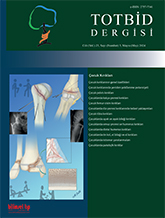
Pathological fractures occur when bones break with lowenergy trauma or without trauma due to existing pathology causing structural weakness. In children, pathological fractures can result from an underlying benign cause or may be associated with systemic diseases and malignancies. The evaluation of pathological fractures in children involves a detailed history, physical examination, and imaging. Information such as medical history, medications taken, and symptoms like pain can assist in diagnosis. Laboratory and radiological imaging should be used to investigate the underlying cause. Since the cause of the fracture is related to an underlying disease, diagnosing and treating the pathology that caused the fracture is important in addition to treating the fracture itself. Therefore, the treatment of pathological fractures differs from the principles of traditional fracture treatment. Understanding the natural course and prognosis of the underlying cause guides decision-making for fracture treatment and predicts outcomes. In cases where the etiology causing the pathological fracture cannot be determined, methods that provide temporary fixation of the fracture should be used, and haste should not be made for final treatment. This review examines the causes and treatment of pathological fractures in children, with a focus on orthopedic oncological causes.